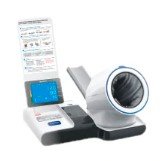Understanding Regulations for Importing Medical Devices from China: Safety and Quality Standards and FDA Compliance
Summary
- Understanding Regulations for importing medical devices from China
- Requirements for ensuring safety and Quality Standards
- Importance of compliance with FDA guidelines
Introduction
Medical laboratories and phlebotomy procedures are essential components of the healthcare industry in the United States. These facilities rely on a wide range of medical devices and equipment to carry out Diagnostic Tests and blood collection procedures. In recent years, there has been an increase in the importation of medical devices from Chinese exporters to meet the growing demand in the medical field. However, importing medical devices from foreign suppliers requires adherence to strict Regulations and requirements to ensure the safety and efficacy of these products.
Regulations for Importing Medical Devices from China
When importing medical devices from Chinese exporters for use in medical laboratories and phlebotomy procedures in the United States, it is important to be aware of the regulatory framework governing such imports. The following are key Regulations that must be followed:
- FDA Approval: All medical devices imported into the United States must be cleared by the Food and Drug Administration (FDA) to ensure that they meet safety and effectiveness standards. This approval process involves submitting documentation and data to demonstrate compliance with regulatory requirements.
- Quality Standards: Imported medical devices must adhere to strict Quality Standards to ensure their reliability and accuracy. Manufacturers are required to provide evidence of compliance with quality management systems such as ISO 13485 to demonstrate the consistent production of safe and effective devices.
- Labeling Requirements: Medical devices imported from China must have proper labeling that includes essential information such as the device's intended use, instructions for use, and warnings about potential risks. Compliance with labeling requirements is essential to ensure patient safety and regulatory compliance.
Requirements for Ensuring Safety and Quality Standards
Importing medical devices from Chinese exporters for use in medical laboratories and phlebotomy procedures comes with the responsibility of ensuring that these products meet safety and Quality Standards. The following are requirements that must be met to maintain the integrity of medical devices:
- Product Testing: Imported medical devices should undergo rigorous testing to verify their safety, performance, and reliability. Testing may include assessments of functionality, accuracy, and durability to ensure that the devices meet the intended purpose.
- Documentation and Records: Importers are required to maintain detailed documentation and records of imported medical devices, including information on the manufacturer, distributor, and specifications of the devices. These records help demonstrate compliance with regulatory requirements and ensure traceability.
- Compliance Audits: Regular audits are essential to verify compliance with regulatory requirements and Quality Standards. Importers should conduct internal audits and inspections of their Supply Chain to identify potential risks and areas for improvement.
Importance of Compliance with FDA Guidelines
Compliance with FDA guidelines is critical when importing medical devices from Chinese exporters for use in medical laboratories and phlebotomy procedures in the United States. Failure to comply with regulatory requirements can result in serious consequences, including:
- Product Recall: Non-compliant medical devices may be subject to recall by the FDA, leading to financial losses and damage to the importer's reputation. Product recalls can also have negative implications for patient safety and public trust in the healthcare system.
- Regulatory Penalties: Importers that fail to comply with FDA guidelines may face regulatory penalties, including fines, injunctions, and import restrictions. These penalties can have significant financial and legal implications for the importer and may result in the suspension of importation privileges.
- Legal Liability: Importers can be held legally liable for any harm caused by non-compliant medical devices, including injuries or adverse events. Legal action may be taken against the importer for negligence, product liability, or violations of consumer protection laws.
Conclusion
Importing medical devices from Chinese exporters for use in medical laboratories and phlebotomy procedures in the United States requires adherence to stringent Regulations and requirements to ensure the safety and efficacy of these products. By understanding and complying with FDA guidelines, importers can maintain the integrity of medical devices and protect patient safety. It is essential for importers to prioritize Quality Standards, product testing, documentation, and compliance audits to meet regulatory requirements and maintain trust in the healthcare system.

Disclaimer: The content provided on this blog is for informational purposes only, reflecting the personal opinions and insights of the author(s) on the topics. The information provided should not be used for diagnosing or treating a health problem or disease, and those seeking personal medical advice should consult with a licensed physician. Always seek the advice of your doctor or other qualified health provider regarding a medical condition. Never disregard professional medical advice or delay in seeking it because of something you have read on this website. If you think you may have a medical emergency, call 911 or go to the nearest emergency room immediately. No physician-patient relationship is created by this web site or its use. No contributors to this web site make any representations, express or implied, with respect to the information provided herein or to its use. While we strive to share accurate and up-to-date information, we cannot guarantee the completeness, reliability, or accuracy of the content. The blog may also include links to external websites and resources for the convenience of our readers. Please note that linking to other sites does not imply endorsement of their content, practices, or services by us. Readers should use their discretion and judgment while exploring any external links and resources mentioned on this blog.
